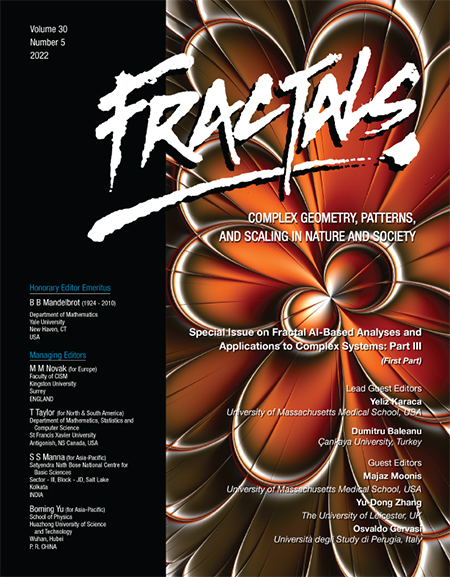A QUANTUM FRACTALS THEORY OF THE PIONS CHAOS AND THEIR FUTURISTIC APPLICATIONS WITH GRANULAR SOURCES
Abstract
Higher-order correlations measured in lead collisions examined the geometrical strength as well as the coherence–chaotic characteristics of the particles creation region. The three- and four-particle quantum correlations can delineate the system of pions at small relative momentum region and observe a significant innovative penchant about the granular sources with various parameters. Such conglomerate of correlation functions and their corresponding genuine correlations are rarely analyzed at higher-order quantum computation via invariant momenta to search the granular structure of pion emanation sources. We evince and examine the pions excretion from a dispersed collection of fluid droplets with coherence snippets that produce quantum interferences to explore the nature of the fluid and the characteristics of the chaos fraction in collisions of heavy nuclei. The cumulant correlations and the normalized correlators with their intercepts contained the existence of amalgamation facet of hadronic particles, and the partons plasma. Specifically, we analyze such hybrid fluid with various correlations functions via droplet numbers to probe the trifle of chaos–coherence fraction of pions condensate by using the source with spherical structure droplets.


